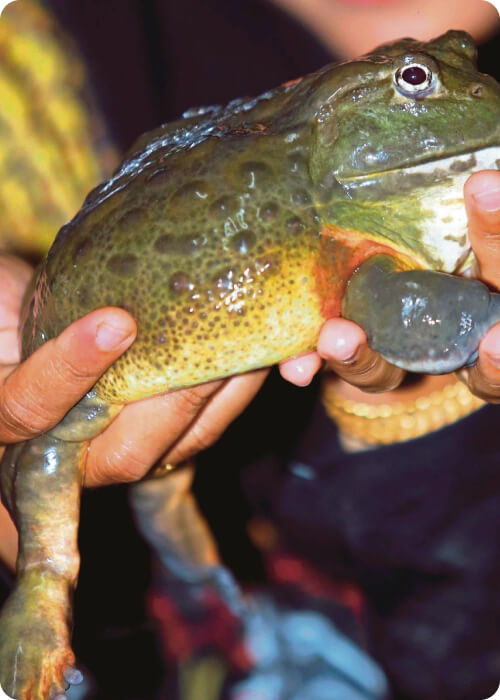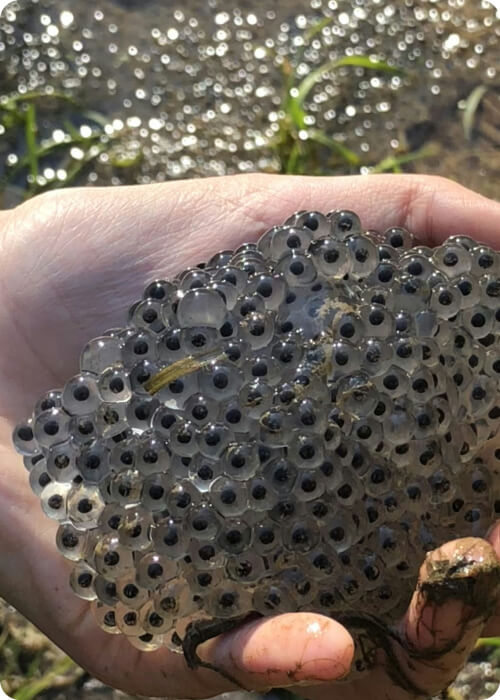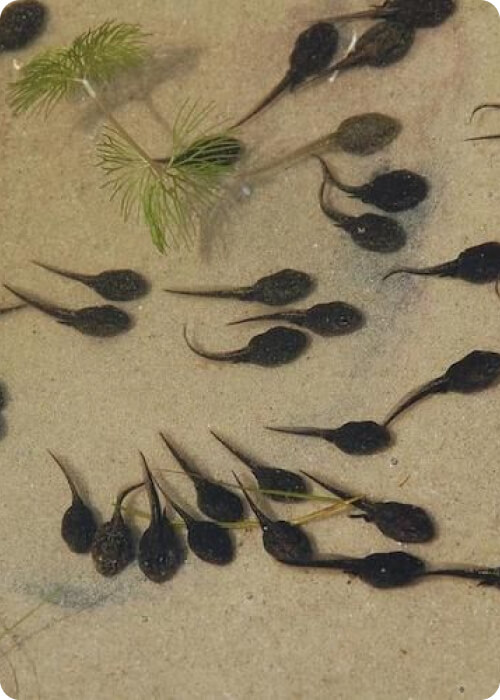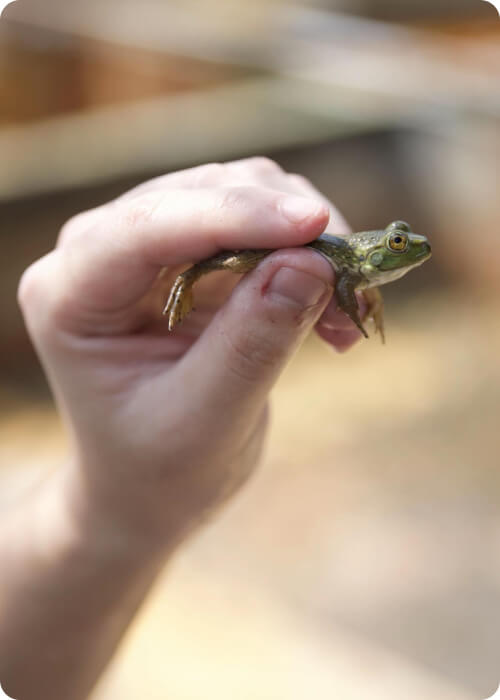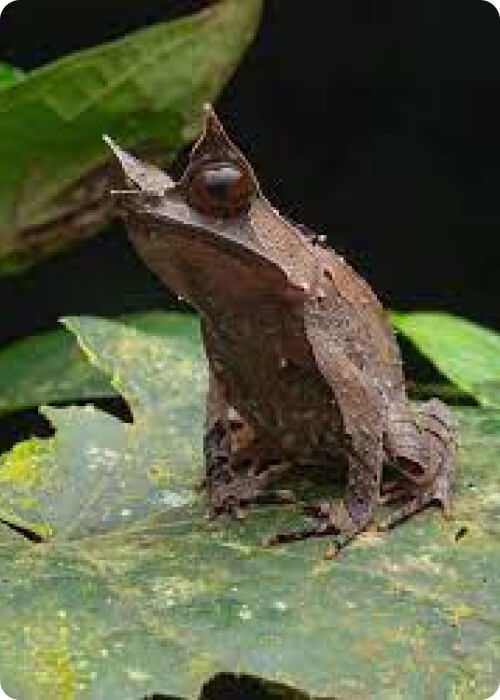You see a vibrant, jewel-like frog in a pet shop and you’re captivated. You think, “A small tank, some crickets… simple.” You feel the excitement of owning a unique, exotic pet. But what you see is only the final chapter of an incredible, high-stakes story. The journey to that adult form is a fragile and complex process, and understanding the complete life cycle of a frog is the single most important factor that will determine if your new pet thrives or tragically perishes.
Ignoring these stages is a recipe for disaster. You hear that frogs are easy, but you may not realise the creature you bring home needs to transform from a fish-like swimmer into a land-dwelling hunter. Providing the wrong care at the wrong time is the most common reason these amazing animals don’t survive in captivity. This guide is here to change that.
The Amphibian’s Astonishing Journey: A Global Perspective
Before we dive into the specific stages, it’s vital to understand the significance and fragility of these creatures. Frogs are environmental indicators, and their life cycles are a marvel of evolution.
- According to National Geographic, there are over 6,000 species of frogs worldwide, and nearly one-third of them are threatened with extinction. Their complex, water-dependent life cycle makes them extremely vulnerable to environmental changes—a sensitivity that extends to the habitats we create for them at home.
This data underscores our responsibility as pet owners. To care for one is to become a guardian of a truly remarkable and delicate life form.
The 4 Stages of a Frog’s Life: Your Essential Care Manual
Think of this not as a biology lesson, but as a step-by-step instruction manual. Each stage has unique, non-negotiable needs. Getting them right is the key to success.
Stage 1: The Egg (Frogspawn)
- What is it? The journey begins as a cluster of jelly-like eggs, or frogspawn. A female frog lays hundreds or even thousands of eggs in a calm, still body of water. Each tiny black dot you see is an embryo.
- Why does this stage matter for you? While you likely won’t be raising a frog from an egg, understanding this stage highlights their absolute dependence on water from the moment of existence. The jelly coating protects the embryo but offers no defence against poor water quality or predators.
- How does this impact care? It establishes the golden rule for all subsequent stages: water quality is paramount. Contaminants, improper pH, or chlorine in the water can be fatal.
Stage 2: The Tadpole (Larva)
This is where most new owners make their first critical mistake.
- What is it? The egg hatches into a tadpole a fully aquatic larva that looks more like a tiny fish than a frog. It has a long tail for swimming and breathes through gills.
- What’s in it for you (WIIFM)? Knowing this prevents a fatal error. You cannot place a tadpole in a standard frog terrarium. For you, this means setting up a small aquarium with clean, dechlorinated water. A tadpole out of water is like a fish out of water; it will suffocate.
- How to care for a tadpole:
- Habitat: A small, filtered aquarium is essential.
- Diet: Tadpoles are primarily herbivores. They graze on algae and decaying plant matter. You can supplement their diet with tadpole food, boiled lettuce, or spinach. Do NOT feed them insects yet.
- Water: Regular partial water changes are crucial to prevent the buildup of waste.
Stage 3: The Froglet (The Great Transformation)
This is the most delicate and awe-inspiring stage: metamorphosis.
- What is it? The tadpole begins a drastic transformation. Hind legs sprout first, followed by front legs. Its body starts to change shape, and most importantly, its gills begin to be replaced by lungs. The tail starts to shrink as the body absorbs it for energy.
- Why is this the most dangerous stage? The froglet is caught between two worlds. It is developing lungs but still has a tail; it needs to breathe air but can’t stay on land permanently yet. Drowning is a major risk during this period.
- How do you manage this critical transition? Your habitat MUST evolve. You need to create a “half-and-half” environment. Provide a gently sloping ramp or a large, stable rock that allows the froglet to easily climb out of the water whenever it needs to. This access to land is not optional—it is essential for survival as its lungs take over.
Stage 4: The Adult Frog (Imago)
- What is it? The tail has been fully absorbed, the lungs are fully functional, and the metamorphosis is complete. You now have a young adult frog. It is now primarily a land-dweller (or semi-aquatic, depending on the species) and its needs have changed completely.
- How does your care pivot now?
- Habitat: Transition to a proper terrarium with the right substrate, humidity, and temperature. Here in Malaysia, managing high ambient temperatures and maintaining specific humidity levels for your species (e.g., a Pacman Frog) is key. Check out our guide on setting up the perfect amphibian enclosure.
- Diet: The frog is now a carnivore. Its diet will consist of live insects like crickets, worms, and roaches, often dusted with calcium supplements to prevent Metabolic Bone Disease.
Read : FAQ for Small Animals & Exotic Animals
The Science of Successful Frog Rearing
The success of raising a frog through its life cycle hinges on meeting its evolving environmental needs. Scientific understanding confirms the stakes.
Research in herpetoculture consistently shows that the most common causes of death in captive amphibians are related to improper husbandry. A study from the American Veterinary Medical Association highlights issues like poor water quality, incorrect humidity, and temperature stress as leading factors in amphibian disease and mortality.
Read : Tips & Strategy For Your Pet – Frog
This reinforces that meticulous attention to the details of each life stage is not just good advice—it’s a requirement backed by science.
Observing the complete life cycle of a frog is one of the most rewarding experiences a pet owner can have. It’s a real-time window into the magic of nature. However, it’s not a passive experience; it requires you to be an active, knowledgeable participant in your pet’s transformation. Our surprising stance is this: you aren’t just one pet owner; you are three. You must be the “fish keeper” for the tadpole, the “transitional habitat engineer” for the froglet, and finally, the “terrarium expert” for the adult.
The most incredible part of this process is internal; during metamorphosis, the tadpole’s long, coiled herbivorous intestine completely shortens and reorganizes itself into the simple gut of a carnivore, as detailed by researchers at The University of Chicago. This internal revolution is a powerful reminder that their needs aren’t just changing on the outside.
